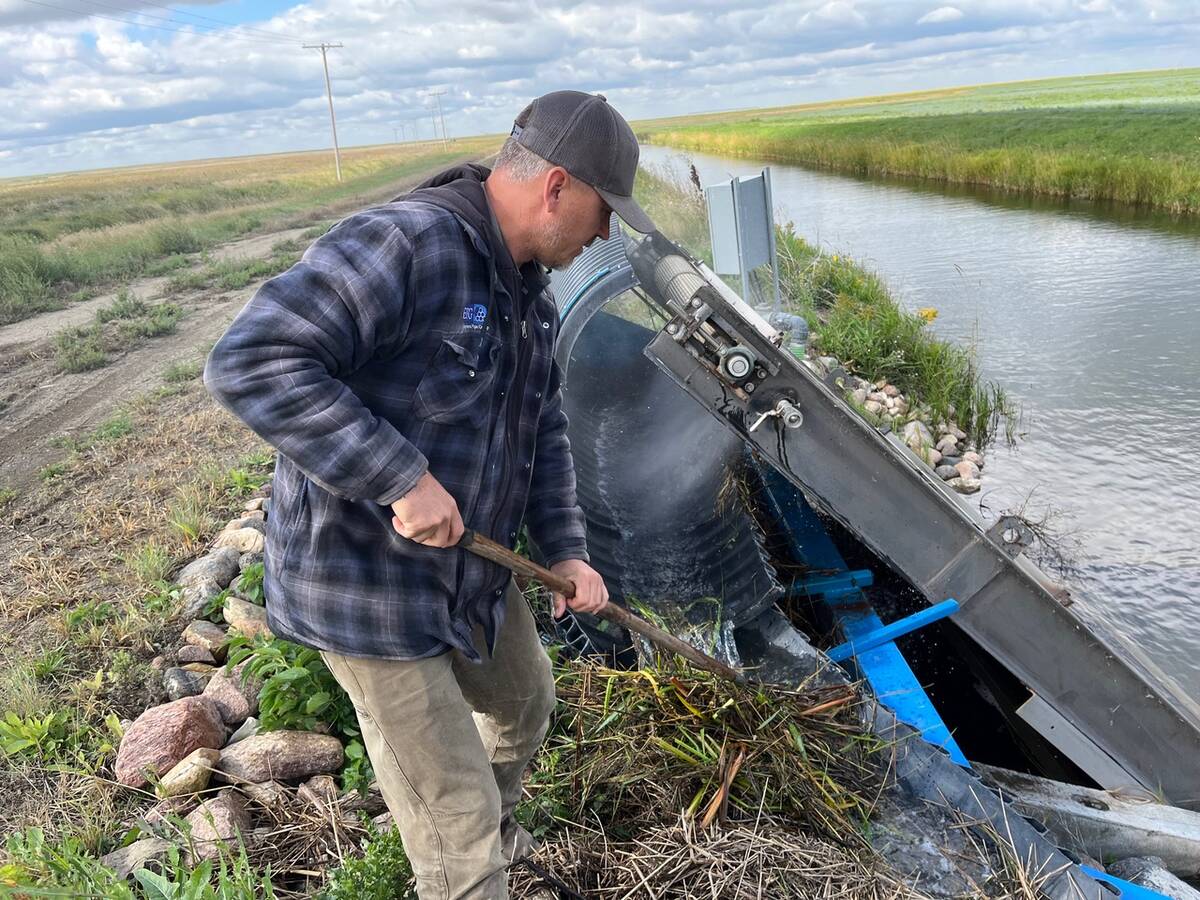A huge influx of imported consumer goods from China has created a west coast traffic jam with long lines of containers stacked six deep at the Port of Vancouver.
Railways can’t keep up with demands to move the incoming product to markets in Eastern Canada and the U.S. Midwest.
The result is a record backlog of container traffic at the port that reached 80 kilometres long earlier this month.
Transportation officials say the situation is having minimal impact on containerized grain exports from the prairie region, since it is primarily an import issue.
Read Also

Saskatchewan farmer uses tile drainage to manage water
The integration of both irrigation and tile drainage results in higher yields, water efficiency, improved soils and less nutrient runoff, says one producer.
CP Rail spokesperson Len Cocolicchio said the railway can’t be expected to keep pace with the unprecedented growth in container traffic, which until recently had been expanding at a manageable six or seven percent a year.
But in the first quarter of 2004, the growth rate surged to “double digit” levels compared to the same period in 2003.
“We can’t be expected to absorb such large, unplanned double digit volume increases on the basis of some perceived infinite capacity in our network,” said Cocolicchio. “We’re working through the backlog of containers as systematically and efficiently as we can.”
At the same time the railway hasn’t forgotten about its prairie export customers who have grain, coal, potash and sulfur to move the other way, to the West Coast.
Canadian Special Crops Association executive director Francois Catellier said his members haven’t experienced any noticeable drop in the level of service due to the recent glut of containers at the port. That said, product has generally been moving slowly since last fall.
“We’ve had container shortages for quite a while now,” said Catellier.
Most of the product coming in from the Pacific Rim is shipped in 12-metre containers, whereas the vast majority of specialty grain is exported in boxes half that size because grain is too heavy for the larger containers. So the boxes sitting in Vancouver are of little use to special crops exporters.
Another problem is that shipping companies are reluctant to route empty containers to the Prairies to pick up a relatively low-value commodity like pulses headed for India when they can make more money importing expensive consumer goods from China. It is not uncommon for shipping lines to send empty containers back to China rather than sending them to Saskatchewan to be loaded with crops.
A third factor working against the special crops industry is the unprecedented rise in ocean freight rates for bulk goods.
“That has had a negative impact on our industry because it means we’re competing against other nontraditional grains for the space on those limited containers that are available for grain export,” said Catellier.
Products that usually move in bulk, like canola and malting barley, are now being shipped in containers to save on costs. But a pending tariff rate increase on containers coming into effect in the next couple of months might take care of the new competition.
“I guess it remains to be seen if that increase is going to be large enough to push some of the nontraditional crops back into bulk.”

















